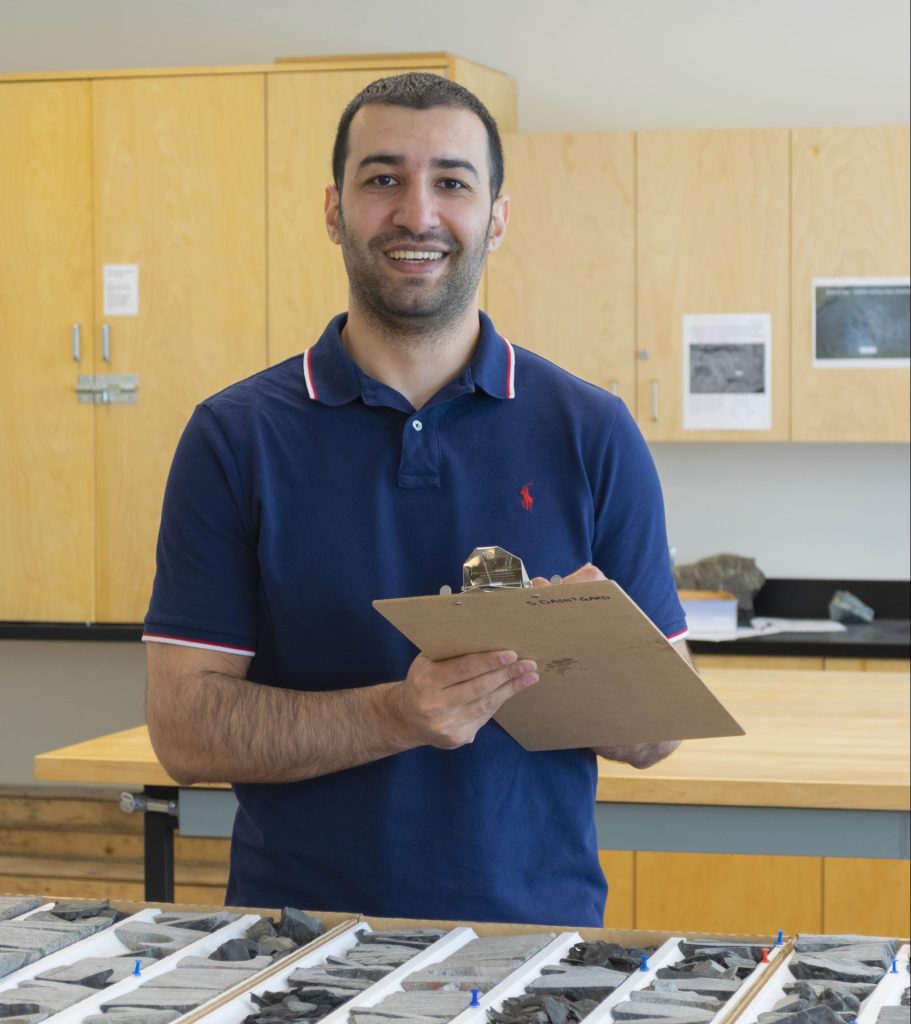Biography:
Maziyar commenced his Ph.D. program in fall 2021. Before joining Simon Fraser University (SFU), under the supervision of Prof. Shahin Dashtgard, he received his M.Sc. in 2019 in Petroleum Geology at the University of Tehran, Iran, and his B.Sc. in Petroleum Engineering in 2013. His M.Sc. thesis investigated The impact of porosity type on stochastic petrophysical calculations with a specific attitude on Archie exponents, a case study of Kangan and Dalan formations in the central Persian Gulf. After graduating with his M.Sc., he received a position as a Petroleum Geologist at Pars Petro Zagros Engineering & Services company (PPZ), Tehran, Iran. While working at PPZ, he was fortunate to become involved in several industrial projects in the field of geology. This led him to broaden and strengthen his knowledge in the field he is passionate about. That valuable opportunity made him determined to pursue his Ph.D. at SFU. Maziyar’s research interests include petrophysics, carbon capture sequestration, reservoir characterization, reservoir modelling, basin analysis, and basin modelling. He is also the 2022 recipient of the Canadian Society of Petroleum Geologists Regional Graduate Students Scholarship.
Project: 3D Reconstruction of the Georgia Basin and Potential for Carbon Capture Sequestration in the Lower Mainland, BC
The region of BC known as the Lower Mainland (LMBC) hosts approximately 60% of BC’s population and industrial activities and as such is a major source of greenhouse gas emissions in the province. Little is known about the reservoir potential of the sedimentary strata underlying LMBC, and therefore, the potential for carbon storage is uncertain. The goal of this research program is to build an integrated 3-D geological model for the Georgia Basin strata that underlie the LMBC. This will be used to simulate CO2-water flow in the subsurface and hence assess the technical aspects of implementing carbon capture, utilization and storage (CCUS). The model will be built by re-evaluating existing datasets and incorporating new ones. These data will be used to evaluate reservoir potential characterization and construct a 3D static model of sedimentary strata and the static geological model in the LMBC. Through this work, he will develop and assess the feasibility of underground CO2 storage and its integration with enhanced geothermal energy recovery. Alternatively, the project will implement machine learning to apply algorithms to interpolate sand distribution between subsurface wells. From these data, Maziyar will identify the most prospective horizons and locations of CO2 storage in the LMBC.
